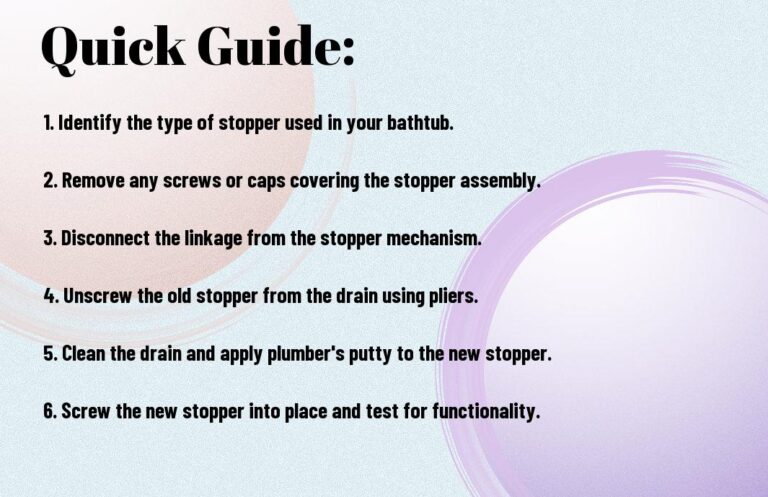How Much Is A Bath In The Bible? The True Measure of a Biblical Bath
The Bible is laden with captivating stories, historical accounts, spiritual teachings, and intricate descriptions, all cloaked in symbolic language. One such symbolic measure frequently mentioned is the “bath.” Many readers often ask, “How much is a bath in the Bible?” This question arises from the natural curiosity to understand the Bible’s teachings and historical context better.
How Much Is A Bath In The Bible? An Ancient Measure
In the context of the Bible, a “bath” is not a cleansing ritual or a body of water, but an ancient Hebrew unit of measurement for liquids. Although this term’s exact measure has long been a subject of debate among scholars, it’s generally accepted that a bath corresponds to about 22 liters (roughly 5.8 U.S. gallons).
The use of a “bath” as a unit of measure in biblical times helped facilitate commerce, regulate construction, and guide social interactions. In this context, understanding how much a “bath” is in the Bible provides clarity to the narrative and helps us comprehend the enormity of certain events.
Historical References
The biblical bath is mentioned multiple times throughout the Bible, primarily in the Old Testament. For instance, in 2 Chronicles 2:10, King Solomon offers his workers twenty thousand baths of oil. And in Ezra 7:22, King Artaxerxes gives a decree to provide up to one hundred baths of wine for the Temple in Jerusalem.
How Scholars Determined the Bath’s Size
To determine the volume of a bath, scholars often reference Ezekiel 45:14, where it indicates that one cor (another unit of measure) equals ten baths. The cor, also known as a homer, was a common container of the time. Archaeological findings of clay cor vessels have allowed us to estimate a bath’s volume indirectly.
A Bath’s Significance in Biblical Times

Understanding the measure of a bath offers more than just numerical clarity—it also provides insights into the historical and cultural context of the Bible. Here are a few key areas where a bath’s value was significant:
Trade and Commerce:
In biblical times, trade and commerce were integral parts of society, just as they are today. The bath, a measure approximately equivalent to about 22 liters or 6 gallons, served as a standard unit for the exchange of goods. This common measure helped ensure fairness and uniformity in commerce, much as standard units of measurement do in modern times.
Traders could use baths to accurately quantify products like oil, wine, or grain, facilitating transactions and contributing to a smoothly operating economy. An understanding of the bath’s volume can help modern readers appreciate the scale and complexity of ancient trade, as well as the role of standardized measures in fostering fair economic practices.
Religious Practices:
The bath also played a significant role in religious practices. In several rituals and offerings, precise quantities of liquids were necessary, and the bath served as the measurement unit for these.
For example, the Book of Ezekiel refers to a hin (a smaller unit, with one bath equivalent to about six hins) of oil as part of an offering, highlighting the importance of exact measurement in religious observances. By understanding the volume of a bath, we gain a better understanding of the quantities involved in these rituals and the seriousness with which they were undertaken.
Construction and Architecture:
Beyond trade and religion, the bath was also significant in the field of construction and architecture. Engineers and architects would use it as a standard measure for calculating the storage capacity of different structures such as wells, reservoirs, and cisterns.
This was crucial for effective water management, especially in areas where water was scarce or needed to be stored for drier seasons. By quantifying these structures in terms of baths, the ancients could plan and build more effectively, ensuring that their communities had access to necessary resources.
By considering the bath in this context, we can better understand the logistical and infrastructural challenges faced by ancient societies, as well as their ingenuity in addressing them.
| Unit of Measurement | Equivalent Volume |
|---|---|
| 1 Bath | ~22 liters (5.8 gallons) |
| 1 Cor/Homer | ~220 liters (58 gallons) |
FAQs
What is a bath in biblical terms?
In biblical terms, a bath is an ancient Hebrew unit of measurement used for liquids, roughly equivalent to 22 liters or 5.8 gallons.
Where is the bath mentioned in the Bible?
The bath is mentioned in several parts of the Bible, including 2 Chronicles 2:10 and Ezra 7:22, typically in the context of trade, religious rituals, and construction.
How was the bath’s measure determined?
Scholars used indirect methods, such as correlating the bath to another unit of measure—the cor or homer—and archaeological findings of clay cor vessels.
Why is knowing the measure of a bath important?
Knowing the measure of a bath provides context to biblical narratives, enriches understanding of ancient practices, and brings clarity to religious teachings.
How was the bath used in daily life in biblical times?
The bath served as a standard measure for trade and commerce, quantifying liquids for religious offerings, and determining storage capacities for construction projects.
Key Takeaways
- A “bath” in the Bible is an ancient Hebrew unit of measure for liquids, approximated at about 22 liters or 5.8 gallons.
- The exact measure of a bath provides context and understanding to the Bible’s narratives and descriptions.
- Beyond its literal measure, the bath’s volume holds significant historical and cultural implications, providing insight into trade practices, religious rituals, and architectural feats of the biblical era.
Related articles:
How Much Water Does A 10 Minute Shower Use? Understanding Your Shower’s Water Consumption

Amanda has been designing and installing bathtubs for over 15 years. She first got interested in the bathtub industry while working as an interior designer right after college. During her years as a designer, Amanda was frustrated by the lack of high-quality, unique bathtub options for her clients. This passion led her to start her own bathtub website in 2009.







